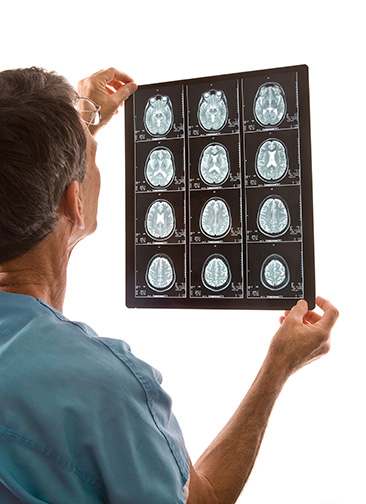Innovations in Care for Stroke Survivors
By Rachel Stephens
 According to the National Stroke Association, current statistics indicate that there are more than 7 million people in the United States who have survived a stroke or brain attack and are living with the after-effects. These numbers do not reflect the scope of the problem and do not count the millions of husbands, wives and children who live with and care for stroke survivors and who are, because of their own altered lifestyle, greatly affected by stroke.
According to the National Stroke Association, current statistics indicate that there are more than 7 million people in the United States who have survived a stroke or brain attack and are living with the after-effects. These numbers do not reflect the scope of the problem and do not count the millions of husbands, wives and children who live with and care for stroke survivors and who are, because of their own altered lifestyle, greatly affected by stroke.
There’s still so much we don’t know about how the brain compensates for the damage caused by stroke or brain attack. Some brain cells may be only temporarily damaged, not killed, and may resume functioning. In some cases, the brain can reorganize its own functioning. Sometimes, a region of the brain “takes over” for a region damaged by the stroke. Stroke survivors sometimes experience remarkable and unanticipated recoveries that can’t be explained.1
A striking case in point was reported on NPR on April 11, 2013: seven years ago, a woman named Evie Branan suffered a stroke that left her in a semi-coma. In May of 2011, she tumbled out of bed, bumped her head and woke up. After seven years, her first words were: “I want to go to a Bob Seger concert.” On the day of the NPR story, Ms. Branan got her wish.
Others aren’t so lucky – general recovery guidelines show:
10 percent of stroke survivors recover almost completely
25 percent recover with minor impairments
40 percent experience moderate to severe impairments requiring special care
10 percent require care in a nursing home or other long-term care facility
15 percent die shortly after the stroke
There are innovative treatments and therapies being developed to help patients survive stroke. Two Hampton Roads providers – Bon Secours DePaul Medical Center and Chesapeake Regional Medical Center – have received the American Heart Association/American Stroke Association’s Get With The Guidelines®-Stroke Silver Plus Quality Achievement Award. The award recognizes their commitment and success in implementing a higher standard of stroke care by ensuring that stroke patients receive treatment according to nationally accepted standards and recommendations.
To receive the Get With The Guidelines-Stroke Silver Plus Quality Achievement Award, Bon Secours DePaul and Chesapeake Regional achieved at least 12 consecutive months of 85 percent or higher adherence to all Get With The Guidelines®-Stroke Quality Achievement indicators and achieved at least 75 percent or higher compliance with six of 10 Get With The Guidelines-Stroke Quality Measures during that same period of time, which are reporting initiatives to measure quality of care. These include aggressive use of medications, such as antithrombotics, anticoagulation therapy, DVT prophylaxis, cholesterol reducing drugs and smoking cessation, all aimed at reducing death and disability and improving the lives of stroke patients.
Get With The Guidelines-Stroke uses the “teachable moment,” the time soon after a patient has had a stroke, when they are most likely to listen to and follow their healthcare professionals’ guidance. Studies demonstrate that patients who are taught how to manage their risk factors while still in the hospital reduce their risk of a second heart attack or stroke. Through Get With The Guidelines-Stroke, customized patient education materials are made available at the point of discharge, based on patients’ individual risk profiles. The take-away materials are written in an easy-to-understand format and are available in English and Spanish. In addition, the Get With The Guidelines Patient Management Tool provides access to up-to-date cardiovascular and stroke science at the point of care.
Education remains the most basic and powerful tool patients and physicians can have. The basic signs and symptoms of stroke are well known: face drooping, arm weakness, speech difficulty. Any of these symptoms by itself is enough to merit a call to 9-1-1. When these symptoms also include the sudden onset of numbness or weakness of the leg, confusion or trouble understanding, trouble seeing in one or both eyes, trouble walking, dizziness, loss of balance or coordination or severe headache with no known cause, patients need to be educated that these could be a transient ischemic attack, which if recognized and treated in a timely fashion can reduce the risk of a major stroke. <
1 Rehabilitation Therapy After Stroke, National Stroke Association
www.stroke.org

